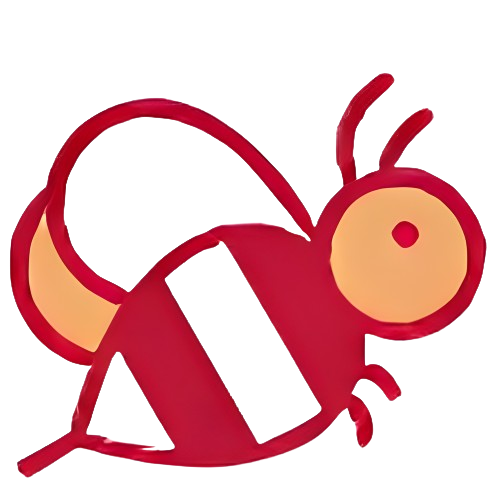


The 45-day long Kumbh Mela festival, known as the largest religious gathering in the world, has begun in the Indian city of Prayagraj. The festival, held once every 12 years, has attracted an estimated 400 million attendees this year due to a rare astronomical alignment. With millions taking a holy dip on the first day, the festival has garnered international attention and can even be seen from space.
Kumbh Mela: The World's Largest Religious Gathering
The Kumbh Mela is a Hindu pilgrimage that brings together millions of people to bathe in the sacred waters of the Ganges River. It is considered the largest religious gathering on Earth, attracting an estimated 400 million attendees this year.
Background
The Kumbh Mela has its roots in the Hindu mythology. The festival commemorates the victory of the gods over the demons and the creation of the universe. According to legend, a few drops of nectar fell to Earth from a pitcher being carried by the demigod Garuda. The places where these drops fell became the four sites of the Kumbh Mela: Prayagraj (Allahabad), Haridwar, Ujjain, and Nashik.
The Festival
The Kumbh Mela is held every 12 years at each of the four sites. The festival lasts for about 55 days, with the main bathing days falling on specific auspicious dates. During these days, millions of devotees take a holy dip in the sacred waters of the Ganges.
The Kumbh Mela is a vibrant and colorful event. Devotees come from all over India and the world to participate in the rituals and celebrations. The festival is a time for spiritual renewal and purification.
Current Event
This year's Kumbh Mela is taking place in Prayagraj. The festival began on January 15th and will continue until March 4th. This year's festival is particularly significant because it is a "Maha Kumbh Mela," which occurs every 144 years. This year's festival is also expected to be the largest ever, with an estimated 400 million attendees.
Top 5 FAQs
1. What is the significance of the holy dip?
The holy dip is believed to purify the body and soul. By bathing in the sacred waters of the Ganges, devotees believe they can wash away their sins and attain spiritual liberation.
2. Why is the Kumbh Mela so crowded?
The Kumbh Mela is the largest religious gathering on Earth. Millions of people come from all over India and the world to participate in the rituals and celebrations.
3. How long does the Kumbh Mela last?
The Kumbh Mela lasts for about 55 days. The main bathing days fall on specific auspicious dates.
4. What are the different types of Kumbh Melas?
There are four types of Kumbh Melas: Ardh Kumbh Mela, Purna Kumbh Mela, Maha Kumbh Mela, and Aadi Kumbh Mela. The Maha Kumbh Mela is the largest and most significant type of Kumbh Mela.
5. What is the history of the Kumbh Mela?
The Kumbh Mela has been celebrated for centuries. The first recorded Kumbh Mela took place in 648 AD. The festival has been held every 12 years since then.

At the Asia-Pacific Economic Cooperation (APEC) Summit in South Korea, Chinese President Xi Jinping and US President Donald Trump met for their first in-person talks in several years. Despite past frictions, Xi called for closer cooperation between the two largest economies in the world, emphasizing the importance of being "partners and friends." Acknowledging Trump's peace efforts in the Middle East, Xi commended his contributions and praised him as a "tough negotiator." Trump also expressed optimism for a productive discussion on trade and global security.

In a historic event, Prime Minister Shri Narendra Modi addressed the Global Maritime Leaders Conclave and chaired the Global Maritime CEO Forum at India Maritime Week 2025 in Mumbai, welcoming participants from over 85 countries. With major shipping giants, startups, policymakers, and innovators in attendance, the summit showcased India's advancements in the maritime sector, such as the replacement of outdated colonial laws with modern ones and the recognition of large ships as infrastructure assets. Amidst global tensions, India stands as a symbol of strategic autonomy and inclusive growth, ready to take on a leading role in the world's rough seas.

Indian Prime Minister Narendra Modi has declared that the next generation of Goods and Services Tax (GST) reforms will begin on the first day of the Navratri festival. This major economic overhaul aims to streamline the current GST system and support businesses, especially small and medium enterprises. In other news, the National Human Rights Commission (NHRC) and Ministry of External Affairs (MEA) are collaborating to organize a six-day program in New Delhi to strengthen executive capacity for International Technical and Economic Cooperation (ITEC). Lastly, the upcoming BIRC 2025 conference will take place at the Bharat Mandapam in New Delhi.

Indian Prime Minister Narendra Modi is set to address the Global Maritime CEO Forum and Maritime Leaders Conclave at India Maritime Week (IMW) 2025 in Mumbai on Wednesday. The event will bring together global maritime leaders, investors, policymakers, and innovators to discuss sustainable growth and inclusive blue economy strategies, showcasing India's efforts towards becoming a leading maritime power. With the theme 'Uniting Oceans, One Maritime Vision' and participation from over 85 countries, the event will highlight India's commitment towards maritime sustainability and climate responsibility.

Cyclone Montha has intensified into a 'severe' cyclonic storm and is expected to make landfall in Andhra Pradesh this evening. The storm, which may cross the coast near the Kakinada area, is likely to bring heavy rainfall and strong winds to several districts in Andhra Pradesh. Meanwhile, the Odisha government has evacuated people from vulnerable areas and issued warnings for heavy rainfall in several districts. Commuters in the Waltair region have also been affected as train services have been cancelled, diverted, or terminated.

The India Meteorological Department has warned of an impending severe cyclonic storm, named 'Montha', that is expected to make landfall near Kakinada on the Andhra Pradesh coast. The storm has already caused heavy rain and strong winds along India's east coast and will continue to do so until Tuesday. States like Tamil Nadu, Odisha, Andhra Pradesh, and more have been placed on high alert and the government has declared holidays for schools in several districts as a precautionary measure. The Union Minister and BJP Chief has also directed party units to assist in rescue and relief operations.

While conducting routine operations on Sunday, two separate crashes involving US Navy aircraft occurred over the South China Sea, coinciding with President Trump's visit to Asia. The first involved a MH-60R Sea Hawk helicopter from the USS Nimitz, and the second involved a Boeing F/A-18F Super Hornet fighter jet. Luckily, all personnel involved were rescued without any injuries reported.

In a strong statement, President Asif Ali Zardari reiterates Pakistan's unwavering stance on the Kashmir dispute, calling India's claims on the territory illegal and in violation of international law and UN resolutions. He criticizes the recent remarks by Afghan leadership, highlighting the documented fact of terrorist attacks targeting Pakistani civilians and urging Kabul to take action against these militant elements. Zardari stresses that the fight against terrorism is a collective responsibility and Pakistan will not compromise its sovereignty or national security.

A tragic bus accident in Andhra Pradesh, India, which claimed the lives of 19 passengers, has been linked to a drunken biker, B Shiva Shankar. According to forensic reports and police investigations, the biker's reckless and intoxicated driving caused the initial crash that led to the bus fire. The bus was also carrying a consignment of smartphones and electric batteries, intensifying the fire and explosion. The second bus driver, who was reportedly sober, is cooperating with the investigation as police continue to file cases based on evidence and eyewitness accounts.

Indian Prime Minister Narendra Modi declared that the year 2026 will be marked as the "ASEAN-India Year of Maritime Cooperation" during the 22nd ASEAN-India Summit. This announcement highlights India's growing alignment with the ASEAN bloc, with Modi emphasizing the importance of the partnership in terms of strategic and economic cooperation. The Summit's theme of "Inclusivity and Sustainability" also reflects the shared priorities of both India and ASEAN, with joint efforts in areas such as digital inclusion, food security, and resilient supply chains. In addition to strategic cooperation, Modi also highlighted the expansion of collaboration in other areas such as education, tourism, and cybersecurity, while acknowledging the new member Timor-Leste and extending condolences to Thailand. Looking ahead, Modi expressed confidence in the long-term vision of ASEAN and India's development goals, stating that the 21st century belongs to both India and ASEAN.